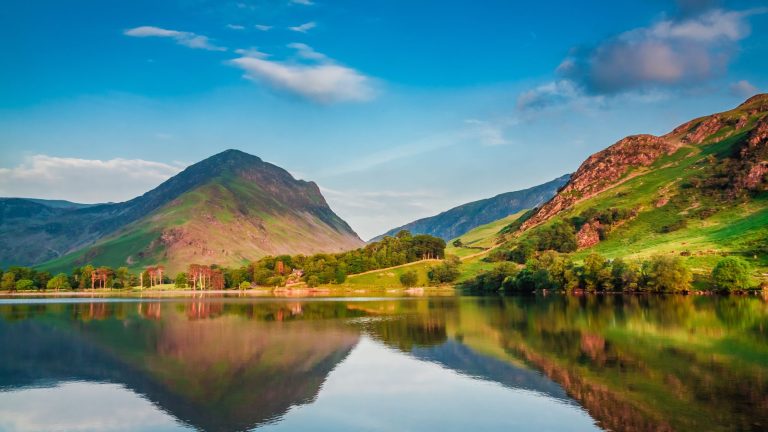Understanding Catamarans
When you think of sailing through turquoise seas, what comes to your mind? If you’re picturing luxurious, spacious boats that glide smoothly over water, then you’re probably thinking of catamarans. These multi-hulled marvels are not your average boats; they’re about stability, space, and speed. Let’s set sail on understanding what makes them so unique.
Catamaran Basics
Catamarans are characterized by their two parallel hulls, which fundamentally distinguish them from the traditional monohull vessels. This twin-hull design often results in a wider beam, creating an inherently stable platform. While they boast a shallower draft compared to monohulls, catamarans generally provide more living space and less heeling. With less resistance in the water, performance catamarans can achieve greater speeds. The typical displacement of these vessels means they sit on top of the water rather than plowing through it, which adds to their efficiency.
Historical Evolution
The history of the catamaran dates back thousands of years, with its roots in the fishing and transportation crafts of the ancient Polynesians. Through generations, the design has evolved from simple canoes with outriggers to the sleek, modern vessels we see today. From rudimentary construction to high-tech materials, catamarans have adapted to become a favorite in both private and commercial sectors.
Types of Catamarans
If we list out the types of catamarans, you’d encounter various classes tailored to different sailing needs. You have your cruising catamarans, spacious and comfortable, ideal for those leisurely voyages. There’s the more agile performance catamarans, designed with speed and responsiveness in mind. And then, the luxury catamarans—think of these as floating mansions, complete with opulent amenities and furnishings.
Sailing Catamarans
Your sailing catamarans are akin to dancers on water. With sails harnessing the power of the wind, these vessels are all about eco-friendly propulsion and an authentic sailing experience. Imagine gliding past coastlines without a noise except for the wind in the sails and the water against the hulls. Brands like Lagoon and Fountaine Pajot have become synonymous with this category, providing a range of options from small day sailors to majestic cruisers.
Power Catamarans
Power catamarans, as the name suggests, rely on engines for movement. These are the go-to for those who prefer a bit more oomph in their voyage—capable of higher speeds and longer range without wind dependence. They’re perfect if you’re into coastal hopping or even deep-sea adventures.
Luxury Catamarans
Indulge yourself with luxury catamarans, the epitome of elegance on the water. These vessels come with full crews, gourmet meals, and the kind of pampering you’d expect at a 5-star resort. They represent the pinnacle in comfort and amenities, often custom-designed to meet the desires of the most discerning sailors.
Let’s pause for a breath—feeling the breeze yet? Catamarans are indeed a special breed of vessels that combine innovation, comfort, and performance. So next time you dream of sailing, think of these dual-hulled wonders and consider that perhaps your next adventure awaits on board a catamaran.
Catamaran Design and Construction

Catamarans are unique in the boating world, offering stability, space, and speed that many sailors dream of. Whether you’re an enthusiast or a prospective buyer, understanding the intricacies of catamaran design and construction is essential. Have you ever wondered what goes into making these remarkable multihull vessels?
Multihull Structure
Multihull vessels, such as catamarans, are defined by their two separate hulls. This design provides natural stability which is excellent for reducing seasickness. A significant advantage here is safety; with two hulls, even if one becomes flooded, the catamaran can often remain afloat and upright.
The Dual-Hull Design
The dual-hull design of catamarans allows for a wider beam, which translates into more deck space. When compared to monohulls, catamarans don’t heel over, making your experience onboard more comfortable and safer. This design also means less resistance when cutting through water, increasing your speed potential.
Advantages of Multihulls
Catamarans are renowned for their spaciousness and comfort, but did you know they tend to have a shallower draft? This allows you to easily explore shallower waters where other boats can’t go. Additionally, they are often faster, making them a favorite for both racing and cruising.
Materials and Construction
When building catamarans, manufacturers often utilize lightweight materials to enhance performance without compromising strength. Composites like fiberglass are common due to their durability and ease of maintenance.
Building Catamarans
The process of building catamarans involves meticulous planning and precision. Each step, from the initial design to the final touches, aims for a blend of performance and comfort. The popularity of DIY catamaran kits has also risen, catering to those who wish to take a hands-on approach to their vessel.
Composite vs. Aluminum
Catamarans can be built from various materials, but the debate often falls between composites and aluminum. Composites are prized for their strength-to-weight ratio, while aluminum is favored for its toughness and repairability. The choice depends on the intended use and the desired balance between weight and durability.
Rigging and Sails
The rigging and sails are critical in determining a catamaran’s performance. With more sail area, catamarans capture a greater amount of wind, which can improve speed. However, the sail plan must be carefully designed to balance power and handling.
Sail Configuration
Choosing the right sail configuration depends on your sailing needs. For travelers who prefer easier handling, a simple sloop rig with one mainsail and one foresail may suffice. Alternatively, performance-oriented sailors might opt for additional sails like spinnakers for downwind speed.
Sail Handling Systems
Modern catamarans incorporate advanced sail handling systems to make sailing more manageable, even for smaller crews. Features such as roller furling for the jib and lazy jacks for the mainsail simplify sail deployment and retrieval, which can be a real back saver!
So, have you gotten a clearer picture of what goes into a catamaran’s design and construction? Whether it’s the material selection or the intricacies of sail handling, each aspect plays a part in giving you the ultimate experience on the water.
Key Features and Advantages

When you’re in the market for a boat that embodies comfort and performance, a catamaran is hard to beat. Let’s dive into what makes these vessels a standout choice for sailors and how they might just be your ticket to the ultimate sailing adventure.
Stability and Safety
Catamarans are renowned for their stability on the water, which translates into increased safety during your maritime excursions. Thanks to their wide beams, which can significantly exceed those of monohulls, moments of discomfort from rolling are minimized whether you’re at anchor or cutting through the waves.
Reduced Risk of Capsizing
The dual hulls of a catamaran are not just for show; they inherently provide a lower center of gravity and a wider base, which greatly decreases the odds of capsizing, giving you peace of mind as you navigate various sea conditions.
Safe Sailing in Rough Waters
One of the greatest perks of catamarans is their capability to handle rough waters with aplomb. The vessel’s design allows for quick and responsive movement, which is crucial when you’re miles from shore and conditions become challenging.
Spaciousness and Comfort
A catamaran is synonymous with spaciousness. Due to the dual hull construction, you’ll find ample living spaces comparable to a floating apartment, making long passages or entertaining guests a delightful experience.
Ample Deck Space
Have you dreamed of a boat where you can lounge, dine, and play without feeling cramped? A catamaran’s deck provides generous outdoor living areas, perfect for soaking up the sun or enjoying al fresco meals with a view of the ocean’s expanse.
Comfortable Living Spaces
Below deck, catamarans boast comfortable living quarters with enough headroom and sizeable cabins. The separation between sleeping areas, often located in different hulls, also ensures privacy that’s hard to come by in other vessel types.
Speed and Efficiency
With a sleek design and lighter weight, catamarans can glide through water quickly and with less effort. Their speed capability is not just great for thrill-seekers but also for those who wish to cover significant distances in tighter timeframes.
Fuel Efficiency in Power Catamarans
For power catamaran lovers, the efficiency game is strong. These cats are designed to consume less fuel while maintaining speed, leading to long-term savings and a reduced environmental footprint.
Ocean Cruising Capabilities
A catamaran truly shines when it comes to blue water cruising. The vessel’s stability and performance make this type of boat well-suited for exploring a variety of destinations across the globe.
Long-Distance Cruising Comfort
Planning an overnight or multi-day cruise? Catamarans are equipped to provide exceptional comfort during long-distance journeys, allowing you to reach far-off places like the Caribbean or South Pacific with ease and pleasure.
Catamarans for World Travel
Imagine setting sail to any corner of the world in a boat that feels like home. Catamarans offer that potential with their excellent cruising capabilities, capacity for provisions and fuel, and comfort—making them ideal for the adventurous sailor eager to chart a course for exotic destinations.
Remember, catamarans by brands like Lagoon or Fountaine Pajot are not only a statement of luxury but also showcase the pinnacle of marine engineering designed with your sailing lifestyle in mind. Ready to catch the wind in your sails?
Notable Catamaran Brands and Models

When you’re out on the open waters, the brand and model of your catamaran are as important as the wind in your sails. Let’s talk about some of the most revered names that have made waves in the world of catamarans.
Lagoon Catamarans
Lagoon is a French manufacturer that’s taken the catamaran market by storm. Known for a blend of innovation and tradition, these catamarans have a strong global presence.
Since its inception in 1984, Lagoon has become synonymous with high-quality catamaran craftsmanship. Their journey began as a segment of the illustrious Group Beneteau, sailing onto becoming a standalone brand admired by many.
Fountaine Pajot
Fountaine Pajot, another French marvel, has carved its niche in the luxury catamaran market since 1976, delivering elegance and sturdiness in every vessel.
Awarded multiple times, including ‘Boat of the Year’, Fountaine Pajot’s reputation is built on innovation, performance, and eco-friendly designs. They are a marquee name for discerning sailors looking for the French touch in boating excellence.
Leopard Catamarans
South African-built Leopard Catamarans offer a robust build quality and a luxury cruising experience that appeals to adventurers and comfort-seekers alike.
Leopard has consolidated its status in the catamaran domain with models like the Leopard 48, known for its innovative design and exceptional onboard amenities.
In your quest for the perfect catamaran, these brands and models stand as shining beacons of quality and expertise. Each one has a story to tell and a journey to offer, ready to make your seafaring dreams a reality. Which one will you choose for your next maritime adventure?
Choosing the Right Catamaran
When you’re on the hunt for the perfect catamaran, the choices can be as vast as the ocean itself. From understanding the key differences between sail and power options to considering your unique sailing style and budget, we’ve got the guidelines to help you navigate this significant investment.
Sail vs. Power Catamaran
Sail catamarans are beloved for their elegance and eco-friendly operation. You’re harnessed to the wind, often yielding better performance and lower operating costs. Power catamarans, on the other hand, offer more consistent speeds regardless of wind conditions and typically feature more living space.
Considering Your Sailing Style
Whether you’re dreaming of leisurely coastal cruises or ambitious ocean crossings, your sailing style is crucial. For example, a sail catamaran with a deep draft improves windward performance for long voyages, while a power catamaran might be the ticket for weekend jaunts and entertaining.
Pros and Cons of Power Catamarans
Power catamarans excel in ease of handling and spaciousness. However, they typically have higher fuel costs, so consider this when comparing prices.
Size and Capacity
Determining Boat Size
The size of your catamaran impacts everything from displacement to comfort. Larger models above 40 feet can offer 5 cabins, ample deck space, and enough storage for extended cruising. However, bigger boats also mean higher costs.
Passenger Capacity and Comfort
A catamaran’s design optimally balances capacity and comfort. Here’s a quick reference:
- 2-3 cabins: Ideal for small families or couples.
- 4 cabins: Good for larger groups or charter businesses.
- 5+ cabins: Best for commercial use or those who entertain regularly.
Budget Considerations
Costs of Catamarans
The price of a new catamaran can range from a modest $200,000 to over a million dollars for luxury brands like Leopard Catamarans. Used models can bring significant savings, but factor in potential upgrade and maintenance costs.
Ongoing Expenses
Beyond the purchase price, be prepared for expenses such as docking fees, maintenance, insurance, and of course, fuel for power cats. The latter can significantly affect your budget, especially if you plan to log many nautical miles.
Finding the catamaran that suits your lifestyle, performance expectations, and budget is both an exciting and intensive process. Remember to weigh all factors carefully to ensure your final decision is one that brings endless days of joy on the water.
Maintenance and Care

Taking care of your catamaran not only keeps it looking great but also ensures it performs optimally for years to come. Regular maintenance can prevent costly repairs and extend the life of your boat. Let’s dive right into the nitty-gritty of keeping your cat pristine, shall we?
Essential Maintenance Tasks
“Prevention is better than cure,” they say, and it couldn’t be truer for your catamaran.
- Hull Cleaning: It’s all about the smooth sail, isn’t it? Keep the hull free from marine growth with bi-annual clean-ups.
- Electrical System: Battling corrosion is like facing the high winds at sea. Keep your electrical systems corrosion-free to prevent unexpected failures.
Maintenance Schedule
Sticking to a maintenance schedule is akin to following a treasure map – it leads you to the golden prize of a well-maintained vessel. For instance, oil should be changed at least every 150 hours of engine use.
- Routine Check-Ups: Don’t forget to schedule these with the changing seasons, folks.
- Professional Inspections: Sometimes, you need a seasoned pair of eyes. Yearly check-ups by a professional can spot issues you might miss.
Cleaning and Storage
A clean and well-stored catamaran means a ready-to-go boat when sailing season hits. Nobody likes a damp surprise onboard, right?
- Dry Storage: Whenever possible, store your beloved cat on dry land.
- Cover Up: Use a high-quality cover to shield from the elements – sun, rain, or residents of the nearby trees.
Cleaning Procedures for Catamarans
This is not just a splash-and-dash affair, my friends. Take heed of these steps:
- Freshwater Rinse: After every outing, a freshwater rinse can do wonders against saltwater’s corrosive embrace.
- Mild Soaps: Use gentle cleaners like Woolite or Dawn to keep that canvas looking dapper.
Off-Season Storage Tips
The off-season doesn’t mean rest for you. It’s prime time to ensure your catamaran rests well so it’s adventure-ready when you are.
- Ventilation: Keep air circulating to thwart the ever-creeping mildew.
- Battery Care: Don’t let your batteries go flat. Keep them charged and happy during the off-season.
From the yearly varnishing to the regular freshwater rinses, keeping your catamaran in sparkling condition is a rewarding journey. It’s not just about maintaining value; it’s about cherishing the vessel that carries you across the waters, creating memories one nautical mile at a time. So grab your maintenance kit and let’s keep those cats cruising!
Sailing Safety and Regulations
Ensuring your safety while enjoying the freedom of sailing on a catamaran involves understanding and adhering to essential safety practices and boating regulations. In this section, we’ll navigate through the crucial elements of safety onboard, understand the necessary equipment, and explore the legal requirements that keep you compliant and secure at sea.
Safety Equipment on Catamarans
Catamarans must be equipped with certain safety gear. It’s imperative that your vessel has life jackets for all passengers, fire extinguishers, visual distress signals, and other USA Coast Guard approved safety equipment. Have you checked your boat’s safety inventory recently?
Safety Guidelines for Catamaran Sailing
When you’re sailing a catamaran, it’s wise to “know before you go.” This means checking weather reports and understanding your boat’s limitations. For catamaran-specific tips, remember that while daggerboards or keels enhance performance, they should be handled with care, as they affect the vessel’s stability and maneuvering.
Boating Regulations
Did you know that boating regulations can vary by state and region? It’s not just about being legally compliant; understanding these regulations helps protect the marine environment and ensures that all boaters can enjoy shared waterways safely. Have a look at the U.S. Coast Guard Boating Safety regulations to stay updated.
Adhering to Maritime Laws
Finally, respecting maritime laws and customs is not only a legal obligation but also a mark of a responsible sailor. Here’s a compelling fact: strict adherence to maritime laws significantly reduces the risk of maritime accidents. So, keep abreast of navigation rules to ensure smooth sailing.
Remember, safety is the keel that keeps the exciting adventure of catamaran sailing stable and enjoyable – make sure it’s part of your voyage every time you cast off the lines. Now, are you ready to take the helm knowing you’re well-prepared for a safe journey?
FAQs (Frequently Asked Questions)
What Are the Advantages of Sailing on a Catamaran?
You’re in for a treat with catamarans — they’re like the luxury SUVs of the sea but without the fuel guzzling. Expect sheer stability, more living space, and less heeling than a monohull.
How Much Does a Catamaran Cost?
Thought about owning one of these beauties? Keep in mind, the sticker price varies wildly. We’re talking anywhere from $100,000 for a modest pre-owned vessel to north of a couple of million for a brand-spanking-new one, outfitted for luxury. Remember to factor in maintenance costs, which can set you back a few grand a year.
Are Catamarans Suitable for Family Vacations?
Absolutely, your clan will love the spacious decks and cabins that catamarans provide. It’s like a floating condo with the best ocean views.
What Safety Equipment Should I Have on Board a Catamaran?
Your catamaran should be your safe sanctuary on the seas. So gear up with life jackets, flares, VHF radios, and a dinghy for starts. Also, a solid first-aid kit and safety harnesses are invaluable.






